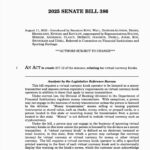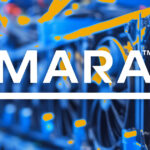Variant Fund’s Chief Legal Officer on Regulatory Standards
Variant Fund chief legal officer Jake Chervinsky asserts that decentralized public blockchains continue to be the regulatory benchmark for product development, despite recent announcements regarding corporate-controlled layer-1 (L1) networks.
On X, Chervinsky expressed that many new L1s developed by companies for specific product objectives are “unnecessary” and “unhelpful” from a regulatory standpoint.
He pointed out that no regulator in the US has required permissioned validator sets or built-in compliance tools, and no significant legislative proposals in Congress have suggested such obligations.
“If you have a great commercial reason to build (or build on) a product-specific L1, have at it. If not, and you’re just vaguely worried about compliance issues, decentralized public blockchains remain the standard,” he stated.
Last month, Circle introduced its own L1 named Arceeee, followed by Stripe’s announcement of Tempo, a payment-oriented L1 network developed in collaboration with Paradigm.
Contrasting Views on Corporate L1s
In response to Chervinsky’s comments, venture capitalist Revaz Shmertz presented a differing perspective, arguing that corporate L1s represent a form of regulatory arbitrage.
Shmertz maintained that regulatory agencies can take unilateral actions through enforcement measures and guidance letters, irrespective of congressional inaction.
“Corporate L1s represent regulatory arbitrage, with companies building blockchain infrastructure that preemptively satisfies compliance requirements rather than fighting for protocol-level neutrality,” he argued.
This approach, according to Shmertz, leads to a “bifurcated adoption” where compliant corporate chains cater to institutional needs, while neutral protocols manage retail and DeFi applications.
He assessed that the reality is such that when traditional finance entities can create blockchain infrastructures within familiar regulatory frameworks, they can bypass the need to advocate for cryptocurrency-friendly legislation.
Maintaining Neutrality in Blockchain Development
Chervinsky’s viewpoint emphasizes the importance of upholding base layer neutrality principles, rather than compromising on decentralization for perceived regulatory advantages that have not been explicitly requested by regulators.
The recent influx of corporate blockchain initiatives will test whether concerns about regulatory compliance or the desire for commercial control ultimately drive the adoption of institutional blockchain.
Meanwhile, lobbying groups are pushing for a flexible perspective on decentralization to the Securities and Exchange Commission (SEC).
The DeFi Education Fund (DEF) delivered a letter to the SEC on April 18, suggesting five core principles for developing a “token safe harbor” framework that supports decentralized finance endeavors.
DEF stressed that any safe harbor should utilize technology-agnostic methods that address activity risks rather than imposing rules for specific blockchain models.
The organization advocated for broad eligibility criteria that would allow already-distributed tokens to qualify, contingent upon their meeting decentralization objectives rather than assessing status solely at genesis.
Chervinsky’s viewpoint reinforces the commitment to maintaining base layer neutrality principles, avoiding any compromise on decentralization for perceived regulatory advantages that regulators have not overtly requested.
The ongoing launch of corporate blockchains will ultimately determine whether regulatory compliance concerns or commercial control is the driving force behind institutional blockchain adoption.



















